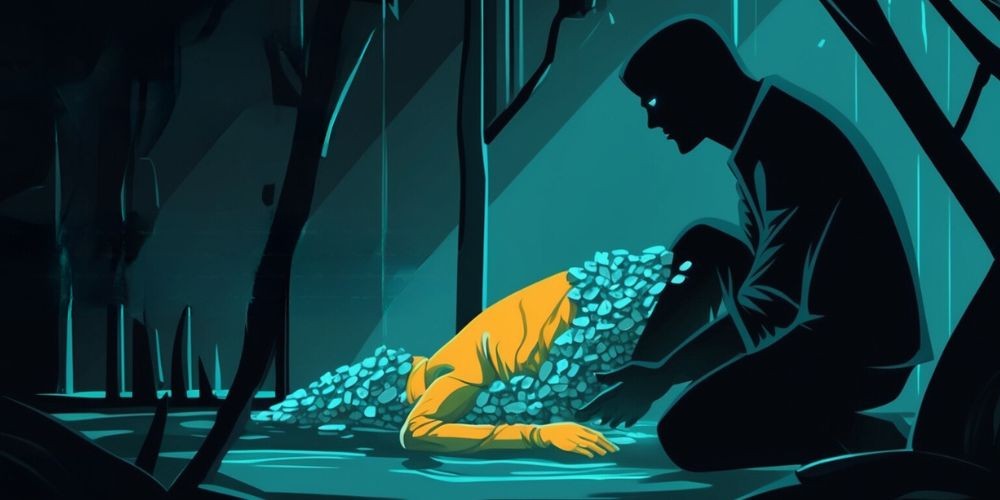Navigating Moral Shadows: An Incomplete Dive into the Uneasy Depths of "Life Eater"
Aug-04-2024

Few game concepts grab attention as potently as one centered around the abduction and unlawful taking of life. While this idea can be highly controversial, it isn't necessarily negative if handled thoughtfully. "Life Eater" tries to straddle this thin line, making for a fascinating indie game that evokes both intrigue and discomfort. However, the game ultimately seems hesitant to fully embrace the very controversy it brings forth. Despite its gripping mechanics and promising premise, "Life Eater" fails to deliver meaningful dialogues or profound reflections on its provocative themes.
Chapter 1: An Unusual Premise

In essence, "Life Eater" isn't the gory action game it might initially seem; instead, it adopts a more cerebral approach, combining puzzle elements with layers of storytelling. The primary gameplay involves examining people's daily routines and uncovering their secrets through various "stalkery" activities like hacking phones or peering into windows. These actions consume time, raising suspicion that players must manage carefully to avoid being caught.
Chapter 2: Mechanically Intriguing
The game intricately balances its mechanics through time and suspicion, compelling the player to make strategic choices. Too much suspicion and authorities will be on your tail. Every action drains precious time and amplifies risk. The subtlety of this management creates thought-provoking puzzles, elevating the experience beyond mere shock value.
Here's the breakdown: Each mission has a set time limit, and suspicion acts as a gauge. If the suspicion gauge fills up, the authorities get involved, and the spelling game is over. Players perform a range of actions, from subtle to overt, depending on how much risk they are willing to accept. Interestingly, you can decrease suspicion through downtime activities like harmlessly "staring." This moment-to-moment gameplay often involves a delicate dance between risk and reward, making every decision momentous.
Discovery-Based Gameplay

The game emphasizes gradual discovery. The player must continuously learn new mechanics and seek out clues hidden within the fabric of daily life. For example, to know whether a target lives alone or has children, the game forces you to dig around and use logic. This detective-style gameplay makes you feel like an uninvited observer, adding to the unsettling yet engaging atmosphere.
Chapter 3: Memorable but Disturbing
Upon filling out a target's diary sufficiently, you can abduct them, transitioning to a macabre memory test. This phase involves answering questions about the victim's life, which you gathered during the observation phase. If you believe they have children, you might symbolically "remove some of their ribs." While cartoony in graphics, these mechanics retain an uncomfortable edge due to the grim context.
If you pass the memory test, you can complete the ritual, driving a stake into your target's heart. Despite the cartoony aesthetics, the act is undeniably discomforting. The duality of thrill and guilt interweave throughout, making it an experience hard to forget, yet unpleasant enough to ponder its ethical implications.
Layered Complexity

As mastery over initial tasks grows, the game ups the ante. It challenges you to abduct multiple people, examine interconnected lives, and solve complex puzzles. Some missions require scouring timelines for corroborating or conflicting evidence, adding layers of intricacy to already nuanced gameplay. For instance, identifying a "monster" among potential targets becomes an engaging mind game.
Visual and Narrative Flair
The narrative interludes accentuate the game’s mood, borrowing heavily from the aesthetic of "Hotline Miami." Ragged slides paired with voiceovers provide context behind your sinister actions. One notable voice actor is the game's creator, Xalavier Nelson Jr, adding a touch of authenticity. As questions mount and the stakes rise, the mystery deepens.
Chapter 4: Falling Short of Potential
Despite its strong start, "Life Eater" struggles to provide satisfying answers to its mounting questions. As players reach the climax, the game leaves many threads unresolved. This unresolved ambiguity seems like the game shying away from the complex themes it broaches, making it feel incomplete.

Missed Opportunities
The game flirts with deeper issues like mental health and societal violence but ultimately doesn’t commit to exploring them. This evasion dilutes the narrative impact, replacing what could have been profound commentary with open-ended rhetorical questions. Instead of challenging the player to self-reflect, the game opts for a less confrontational, more ambiguous conclusion.
Chapter 5: The Cop-Out
The story seems reluctant to dive deep into challenging topics, making it feel like an idea that was too intense to fully realize. It wraps up inconclusively, leaving players with an underwhelming sense that potential opportunities slipped by. The climactic moment becomes anticlimactic, eroding much of the built-up tension and intrigue.
Chapter 6: Final Thoughts
Ultimately, "Life Eater" presents a few hours of engrossing puzzling wrapped in a unique narrative shell. But it lacks the courage to fully embrace the dark, thought-provoking questions it raises. It falls short, delivering only a captivating but incomplete experience. Despite this, the game remains a fascinating experiment in combining puzzle mechanics with uncomfortable themes. A copy of "Life Eater" was provided for review by Strange Scaffold, giving us a glimpse of what could have been more impactful had it fully committed to its provocative premise.








Leave a comment
Your comment is awaiting moderation. We save your draft here
0 Comments